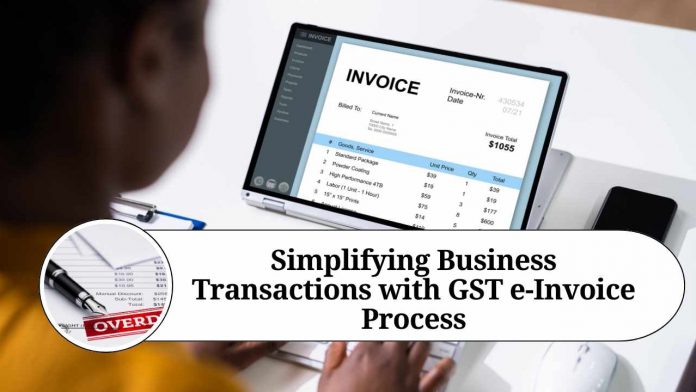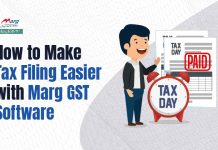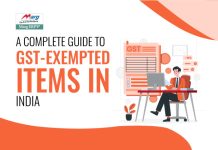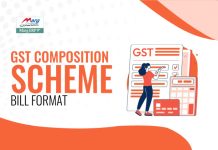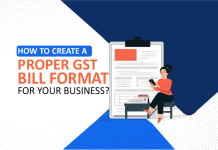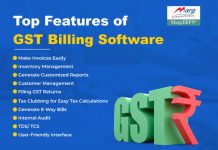Recent Updates on e-Invoicing:
10th May 2023
The Central Board of Indirect Taxes and Customs (CBIC) has announced the implementation of the 6th phase of e-invoicing. As per this new regulation, companies with an annual turnover of more than ?5 crore since the financial year 2017-18 will be mandated to generate e-invoices starting from 1st August 2023. This initiative is in line with the government’s ongoing commitment to adopting digitalization and fostering a technologically advanced economy.
Introduction
In recent years, the Indian government has taken several measures to streamline and digitize the taxation system in the country. One such initiative is the introduction of the Goods and Services Tax (GST) e-invoice process. The GST e-invoice system aims to bring greater transparency, efficiency, and ease of doing business for both businesses and the government. In this blog, we will explore the significance of the GST e-invoice process and how it simplifies business transactions.
Understanding the GST e-Invoice Process: The GST e-invoice process involves generating and reporting invoices electronically to the government’s GST portal. It essentially replaces the traditional paper-based invoicing system with a digital one. Businesses must generate e-invoices for all B2B transactions and report them to the GST portal in real-time. The e-invoice contains all the relevant details required for tax compliance and is assigned a unique Invoice Reference Number (IRN) and a QR code.
- Advantages of the GST e-Invoice Process: a. Enhanced Data Accuracy: Manual data entry errors are a common occurrence in the traditional invoicing system. The e-invoice process reduces such errors as the data is entered directly into the system, minimizing transcription mistakes.
b. Real-time Reporting: The e-invoice system enables real-time reporting of invoices to the GST portal. This reduces the chances of non-compliance and ensures timely updates for businesses and the government.
c. Streamlined Input Tax Credit (ITC) Reconciliation: The GST e-invoice process simplifies the reconciliation of Input Tax Credit. The system automatically matches the details of the buyer and the seller, making it easier to claim and verify ITC.
d. Faster Processing: With e-invoices, businesses can experience faster invoice processing and payment cycles. The digital format enables automation and faster verification, leading to quicker payments and improved cash flow.
e. Reduced Compliance Burden: The e-invoice system reduces the compliance burden on businesses by automating various processes. It eliminates the need for physical documentation, manual reconciliation, and reduces the chances of errors.
- Steps Involved in the GST e-Invoice Process: a. Generating the e-invoice: Businesses need to generate the e-invoice in the prescribed format, including all mandatory fields and tax-related information.
b. Registering with the Invoice Registration Portal (IRP): The generated e-invoice is uploaded to the Invoice Registration Portal (IRP), which validates the invoice and assigns it a unique IRN.
c. IRN and QR Code Generation: The IRP generates the IRN and the corresponding QR code, which contains important details such as the GSTIN, invoice number, and IRN.
d. Reporting to the GST Portal: The e-invoice, along with the IRN, is reported to the GST portal in real-time.
- Compliance Requirements: Businesses must comply with certain requirements to successfully implement the GST e-invoice process. They include: a. Integrating with ERP or Accounting Software: Businesses need to integrate their ERP or accounting software with the IRP to generate e-invoices seamlessly.
b. Ensuring Adequate Infrastructure: Reliable internet connectivity and appropriate hardware and software systems are essential for a smooth e-invoice process.
c. GSTIN and IRN Validation: Businesses must validate the GSTIN and IRN details before accepting e-invoices from their suppliers to claim ITC.
Conclusion
The GST e-invoice process is a significant step towards digitizing business transactions and improving tax compliance in India. It offers numerous advantages, including enhanced data accuracy, real-time reporting, streamlined ITC reconciliation, faster processing, and reduced compliance burden. By adopting the e-invoice system, businesses can simplify their invoicing process, and reduce errors.
Read more useful content:
Frequently Asked Questions (FAQs)
Q. What is GST e-invoice?
GST e-invoice is an electronic invoice generated and reported to the government’s GST portal in a standardized digital format. It replaces the traditional paper-based invoicing system and includes all the necessary details required for tax compliance.
Q. Which businesses need to generate e-invoices under the GST e-invoice process?
All registered businesses with an annual turnover exceeding Rs. 50 crore are required to generate e-invoices for their B2B transactions. However, smaller businesses can voluntarily adopt the e-invoice system if they wish to streamline their invoicing process.
Q. What information is required in an e-invoice?
An e-invoice must contain specific details such as the supplier’s and recipient’s GSTIN, invoice number, invoice date, item details, quantities, tax amounts, and other relevant information as prescribed by the GST laws.
Q. How does the e-invoice system validate the authenticity of an invoice?
The e-invoice system validates the authenticity of an invoice through the Invoice Reference Number (IRN) and the corresponding QR code. The IRP assigns a unique IRN to each e-invoice, ensuring its uniqueness and integrity.
Q. What is the role of the Invoice Registration Portal (IRP)?
The Invoice Registration Portal (IRP) is a government-approved system that validates and registers e-invoices. It generates the IRN and the QR code for each e-invoice and performs validation checks to ensure compliance with GST rules.
Q. Is the GST e-invoice process mandatory for all transactions?
No, the e-invoice process is mandatory only for B2B transactions. However, businesses can voluntarily generate e-invoices for B2C transactions as well to maintain a standardized invoicing system.
Q. What are the benefits of the GST e-invoice process for businesses?
The GST e-invoice process offers several benefits, including enhanced data accuracy, real-time reporting, streamlined Input Tax Credit (ITC) reconciliation, faster processing, reduced compliance burden, and improved cash flow due to quicker payments.
Q. How does the GST e-invoice system simplify tax compliance?
The e-invoice system simplifies tax compliance by automating various processes. It eliminates the need for physical documentation, reduces manual reconciliation efforts, and minimizes the chances of errors in data entry and calculation.
Q. What are the compliance requirements for implementing the GST e-invoice process?
To implement the GST e-invoice process, businesses need to integrate their ERP or accounting software with the Invoice Registration Portal (IRP). They must also ensure reliable internet connectivity and appropriate hardware and software systems to support the e-invoicing system.
Q. How does the e-invoice system help in claiming Input Tax Credit (ITC)?
The e-invoice system simplifies the process of claiming Input Tax Credit by enabling automated matching of details between the buyer and the seller. This helps in accurate and timely reconciliation of invoices, making it easier for businesses to claim and verify ITC.

